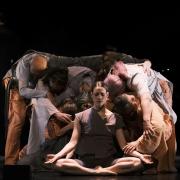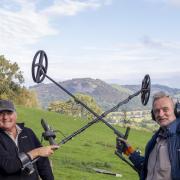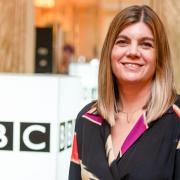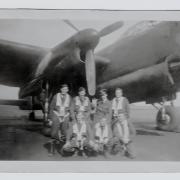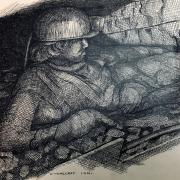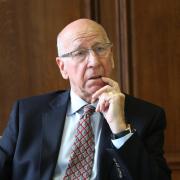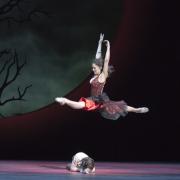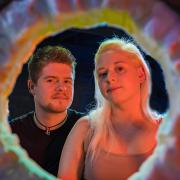Stephen Roberts looks back on the life of Lady Stardust, who gazed at stars and broke glass ceilings but was denied a Nobel Prize
She was born in Davenport, a district of Stockport, but looked far beyond the confines of Cheshire, peering as far as the human eye, aided by the most powerful telescopes, could see. She was an observational astronomer and astrophysicist and we know her by her married name of Margaret Burbidge (1919-2020). As well as discovering new celestial bodies she broke through glass ceilings, forging a career in a world that had been presumed a male preserve and made life far easier for future women astronomers. She’d live to be a centenarian and would pass away an American citizen in far-off San Francisco. She was dubbed ‘Lady Stardust’.
Eleanor Margaret Peachey was born on August 12, 1919, precisely nine months after the Armistice that ended WW1. Eleanor’s theory was that she was conceived amidst the euphoria that greeted the end of four years of total war. Her birthplace was Davenport, which remained a part of Cheshire until 1974. Her parents, Stanley and Marjorie Peachey were, respectively, a chemistry lecturer at Manchester School of Technology, now part of the University of Manchester, and one of his students. There was a 17-year age difference but they married in 1916 despite objections from her father. Eleanor seems to have become known by her middle name so that’s how we’ll refer to her from now on. The family headed for London in 1921 after Stanley had secured a patent relating to rubber vulcanisation, which had made him enough money to see them all heading for the capital where he set up his own lab. Meanwhile, Margaret’s interest in astronomy appears to have been fired by a cross-Channel ferry trip when she was aged just three or four and was entranced by the stars above. Her parents bought her first telescope. Before entering her teenage years, Margaret was already devouring astronomy books, including by Ormskirk’s Sir James Hopwood Jeans (1877-1946) who just happened to be distantly related to her mum. She had a younger sister, Audrey.
Margaret graduated first class from UCL (University College London) in 1939, going on to achieve a Ph.D. in 1943. Wartime observations at the University of London Observatory (ULO) were apparently interrupted by the odd German flying bomb and post-war she lectured at ULO, her students including Arthur C. Clarke (1917-2008) the future sci-fi author and screenplay co-writer of that iconic film 2001: A Space Odyssey (1968). Margaret’s hopes of observing at the Mount Wilson Observatory (Los Angeles) had been thwarted though; the facility was reserved for men at the time (she’d be similarly rebuffed in the mid-1950s when she applied for a fellowship there). Her first job in the US was at Yerkes Observatory (University of Chicago) in 1951, named after Charles Yerkes (1837-1905), a US financier who was involved in bankrolling the extension and electrification of the London Underground. He has a crater on the moon named after him; our Margaret would go on to have an asteroid named after her (5490 Burbidge).

Margaret married Geoffrey Burbidge, an argumentative, cigar-smoking Oxfordshire-born astronomy professor and theoretical astrophysicist, on April 2, 1948. They’d met six months previously at UCL (University College London) so it had been a fairly rapid-fire romance and a meeting of like-minded intellectual boffins. The pair would collaborate on their researches during a liaison that lasted more than six decades. Meanwhile, during the ‘50s Margaret was one of the founders of the science of stellar nucleosynthesis, or the creation (nucleosynthesis) of chemical elements by nuclear fusion reactions within stars.
Margaret and Geoffrey had one daughter, Sarah, born in 1956. The following year Margaret achieved her other magnum opus, which was to be the first author of the paper known as the B2FH paper after its originators' initials: Burbidge x 2, American William Alfred Fowler (1911-95) and Yorkshireman Fred Hoyle (1915-2001). This paper, written while pregnant with Sarah, demonstrated that most heavier chemical elements were formed in stellar evolution, an advance in our knowledge that is very much at the heart of stellar nucleosynthesis. Revolutionary at the time, it set out how elements in the periodic table originated in stars. Fowler would later be awarded the Nobel Prize in Physics (1983) for his work on nucleosynthesis, which rather begs the question why not Margaret Burbidge? Fowler himself expressed surprise that Margaret was not included among the citations. She remains perhaps one of the finest scientists not to have won a Nobel Prize but who surely should have done. Ironically, Margaret was a fierce opponent of any discrimination against women in the world of astronomy; her lack of a Nobel Prize is a case in point, perhaps. She was also against positive discrimination in favour of women; what she wanted was a meritocracy, pure and simple.

During the 1960s and ‘70s Margaret busied herself looking at rotation curves, or velocity curves, which involved staring at galaxies and looking at bodies within those galaxies and their orbital speed compared to their radial distance from the galaxy’s centre. She was also researching quasars, those luminous active galactic nuclei (AGNs), their super-bright emissions powered by supermassive black holes. It was while immersed in all this she discovered the most distant astronomical object then known. It was a record she’d hold between 1974-82. During the 1980s and ‘90s Margaret, by now very much a senior, was helping to develop and then use the Faint Object Spectrograph on the Hubble Space Telescope, which was launched into a low Earth orbit in 1990 and remains in use to this day
Of the dozen and more awards, memberships, fellowships, lectureships, directorships and presidencies that came Margaret’s way perhaps the most prestigious was becoming a Fellow of the Royal Society in 1964. She shared both the Helen B. Warner Prize for Astronomy (1959) and the Gold Medal of the Royal Astronomical Society (2005) with Geoffrey, and was the first woman to be director of the Royal Greenwich Observatory (1973-75). She was also president of the American Astronomical Society (1976-78) and of the American Association for the Advancement of Science (1983). She had a lengthy stint at the Center for Astronomy and Space Sciences at UCSD (University of California San Diego), working there from 1962 and becoming its first director (1979-88). She was also posthumously honoured by becoming the American Astronomical Society’s inaugural Fellow in 2020.

Margaret would become a US citizen in 1977. She lost her husband, Geoffrey, in January 2010 after 61 years of marriage and died a decade later in San Francisco on April 5, 2020, well into her 101st year. She was a published, author including of Quasi-Stellar Objects (1967,) which she co-wrote with Geoffrey. She was an independent spirit and a lover of poetry. Her personal memoir was entitled Watcher of the Skies. That she was. She was intelligent, charming and patient. Her manner was understated, her achievements anything but.
READ MORE: John Flamsteed, the founder of the Greenwich Royal Observatory




